MEDIBLOC: REINVENTING MEDICAL RECORD KEEPING
Overview of Medical Record Keeping
When a patient visits a hospital, the physician takes a history of the patient's condition. He then carries out some physical examination and if need be, request for investigations which can be radiological or laboratory to help him make a diagnosis and know how best to manage the patient. In time past, the physician used to document his finding in folders which were kept at shelves. Medical record keeping unit is saddled with the responsibility of retrieving the folder when the patient visits the hospital again.
In developed countries, there has been an evolution from this manual method of medical record keeping to electronic storage format. The archaic traditional manual method is still however prevalent in many under-developed countries.
Both electronic and manual methods of medical record storage share a common treacherous ground which is conferring hospitals and healthcare providers, and in fewer cases, health insurance companies, with the sole responsibility of health information repository. This in many ways is to the detriment of the patient, researchers and other health centres who are not within the ambit of the health institution with the medical data.
Limitations of the Current Centralized Medical Record Keeping Method
The present centralized method of health information keeping by medical institutions is replete with loopholes which directly and/or indirectly hamper effective healthcare access, privacy and research both in medical and non-medical fields.
Patient's cannot vouch for the safety of their personal information in the custody of these healthcare institutions. Many of those information are sensitive. There have been cases of hacking and data leakages in a number of medical institutions. According to DATAINSIDER, a February 2017 survey carried out by Accenture divulged that healthcare data breaches have affected 26% of United States population. The survey further hinted that 50% of breach victims eventually suffered medical identity theft, with an average of $2,500 out-of-pocket cost. See the full report here.
"In 2015, more than 112 million healthcare records were breached just in the United States and annual financial loss is recorded to be over $6.2 billion" - MediBloc Whitepaper
The reasons behind healthcare data attack, breaches and leakages are not far-fetched. They provide great deal of personal information such as names, addresses, ages, health insurance information and many others which can be used by bad people for imposition, misrepresentation, theft and other unlawful acts.
Sole repository of healthcare data by medical institutions is also dealing a big blow to research. These institutions may use these data for their own research or leak them to influential people without the consent of the patients. On the other hand, individuals who wish to carry out research but do not have the influence to obtain valuable information from these medical institutions suffer a lot of setback. This is because medical privacy law makes provision for only patients to retrieve their medical information. Approximately 8 months ago, a friend of mind wanted to do a research in the field of social work. He wanted to know how and to what level diabetes mellitus affects the level of productivity of middle-aged people in Enugu metropolis of Nigeria. Till date, he has not been able to carry out the research because health institutions he visited for data told him to go and get patients' consent which was almost impossible as he had no clue on how to locate these patients. It was excruciatingly frustrating!
It is a common experience that we go back to the same rigorous process of history taking, physical examination, radiological and laboratory investigations most times we visit a different hospital especially when we travel to another place. It is more annoying when your reason for visiting is same for which you were visiting your previous hospital. Not only do you go through the same series of questions and examinations again; you also spend more money, waste more time repeating tests and procedures you have previously done.
Attempts Made to Improve Healthcare Data Keeping
Attempts have been made by both the government and companies towards integration of healthcare data but none has been able to bring about an appreciable change in the medical record keeping sector. Medibloc Whitepaper recognised the efforts made by A US government-led project, Samsung's mobile healthcare application and Apple's healthcare application.
So the ultimate question remains, what is the way forward?
Permit me to introduce to MediBloc. It is the way forward we seek.
What is MediBloc?
MediBloc is a healthcare data storage platform built on the blockchain technology. It is a platform where patient's medical information can be compiled giving room for new information integration, guaranteeing security of such information and allows patients to be custodians and managers of their healthcare information instead of healthcare centres.
The aim of MediBloc is decentralization of the current centralized healthcare keeping method which is anarchical to the growth of healthcare access, services and does not guarantee patients' safety.
Mission Statement of MediBloc reads
" To improve healthcare access and experience by redistributing value of personal healthcare data, accelerating the world's shift to private information decentralization" MedicBloc WhitePaper
Why MediBloc?
Here are few reasons why MediBloc is the panacea to the problems plaguing medical record keeping over the years.
High Reliability: MediBloc will nip fear of data loss in the bud. The platform will continuously generate backup data which is not very likely in medical institutions. Writer's records in the platform are always verifiable. The system will also ensure only accredited medical practitioners are allowed. Furthermore, no healthcare provider or practitioner will be allowed access to anyone's health information without the consent of such a person.
High Transparency Level: MediBloc will put shoddy deals such as health data leakages to an end. This is because when, where and for what purpose healthcare information was used will be made available in the platform. All the activities of the users will be recorded as well.
High Accessibility: With the advent of internet and coupled with the level of technological advancement in our world today, it is otiose to travel from one place to another to access information. Healthcare information should not by any means be an exemption. MediBloc as a platform will make healthcare information available to users in the platform with the permission of those who are the owners of such information.
High Interoperability: MediBloc is not a rigid platform. There is no single standardized recording or operational format on MediBloc. MediBloc allows data both in standardized format like genetic information and those that are yet to be standardized like laboratory test results. In addition, developers can build Apps for individuals, groups and companies as well as develop codes for various formats. Already, MediBloc has made a provision for API/SDK for developers to build their own services and applications on the platform to suit their taste. MediBloc is an open-source nature, flexible platform.
Security: Information is prone to attack and hacking when they are collectively stored in an institution than when they are decentralized. Users in MediBloc will have private keys which they will use to decrypt information. Therefore the system ensures the security of healthcare information by entrusting it into the hands of the owners themselves.
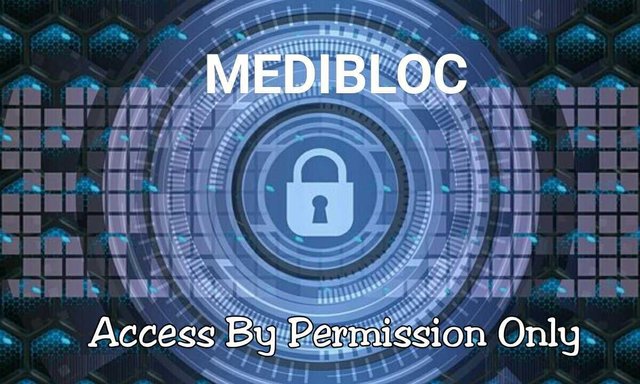 Pixabay Image modified by me
Pixabay Image modified by me
Patient-Centred Healthcare Information System: In MediBloc , patients can key in daily information about their health into the system which will be integrated. This will ensure that information outside the hospitals are taking cognizance of in holistic assessment of the patient. MediBloc therefore offers personalized healthcare services and this can be done using simple devices like the smart phones.
MediBloc Platform Structure
MediBloc is structured in three layers, viz: MediBloc core, MediBloc services and MediBloc Apps
The core layer is the information and data storage layer. It ensures data is stored outside the blockchain since the blockchain allows for small information storage. It is also functions as a backup and recovery system of the platform.
MediBloc service layer is the middleman between MediBloc Apps and the core layer. Apps have access to the core layer through it and it allows data input/output through connection with the core layer. The service layer can be divided into Ethereum Virtual Machine ( EVM) based smart contract and Connecting Application and core layers.
MediBloc Apps are applications used to access MediBloc through the service layer. Like I said before, developers can develop Apps using SDK which is already existing in MediBloc or they can follow the communication protocols and build their own Apps.
Components of MediBloc Platform
MediBloc as a DApp is EVM-based. This ensures there is no restriction in the platform as EVM is most widely used for smart contract development and in addition is supported by many blockchain platforms such as Ethereum, EOS and Qtum.
MediBloc Account: Three different accounts can be created and they are: General users, Healthcare providers and Data researchers. The table below from MediBloc White paper outlines the features and accessibility of these accounts.
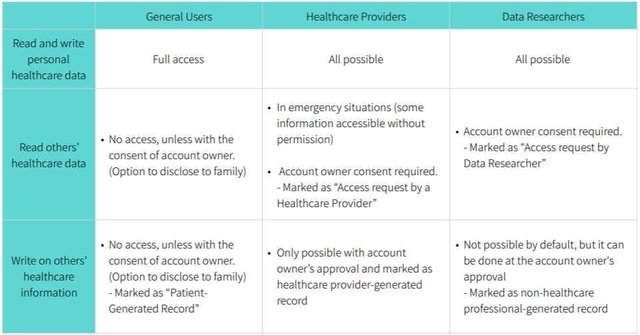
Healthcare Provider Credential System: healthcare institutions and practitioners will have to show proof of their certification or license before they join MediBloc. This is a measure to ensure information reliability since data provided by them will have more weight in the system.
MediBloc Database: MediBloc allows for greater data storage capacity up to 1 gigabyte unlike the electronic method that allows for a few megabyte. Data will be stored outside the blockchain; only the hashed values of these data will be made available in the blockchain thus personal information won't be available to random people. Every user will be entitled to free 1GB Storing space. Those with large data can have access to more space with just a little token. Most important feature of this component is that lost data can be recovered because they are backed up.
MediBloc Data Search System: To aid easy access to information, users can include and set search system option which will be made available in the platform. Only those who allow the search function will be allowed to use it. Users also have the prerogative to set restrictions on what information will be made available using the search settings option.
MediBloc Use Cases
Use Case 1: Let us use that my friend who wanted to carry out a research on diabetes mellitus as a user case here. With the advent of MediBloc, he will not have the need to visit medical institutions again. He will simply log in to MediBloc and search for middle-aged people who have diabetes mellitus. He will get the information he wants from them either for free or he enters into a smart contract agreement with them and exchange Med Token for the information he needs. He goes on to carry out his research happily.
Use Case 2: Kim travelled from Asia to America on a business trip. He was to see his Asian doctor the next day but he could not afford to miss the trip as the future of his company is largely dependent on it. So Kim went to see another doctor in America, goes to his MediBloc account and allows the doctor have access to his healthcare information. Without any delay, Kim was promptly attended to and he left happily.
Use Case 3: Thompson needs to reach his health insurance company to clear his medical bills. He does not need to travel to the company's office or waste his time and money on calls. He quickly entered into smart contract agreement with the healthcare service providers in MediBloc which will be used later to bill the health insurance company.
MED Token
The economy of MediBloc will be run using Med Token. It will be used for interaction and exchange within and outside the platform.
The token model is divided into - MED Token (MED) and Medi point (MP). The difference between them is that while MED is tradable outside MediBloc platform, MP is not. MP can only be used within the platform and can be converted to MED at will. Those who add value to MediBloc will be incetivized with MP.
Below is a chart from MediBloc Whitepaper showing the distribution of MED Token
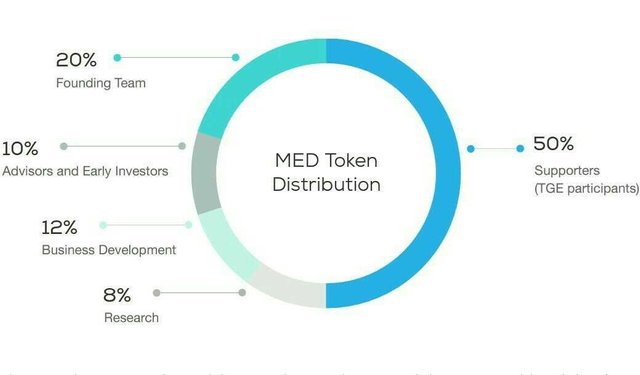
MediBloc Roadmap
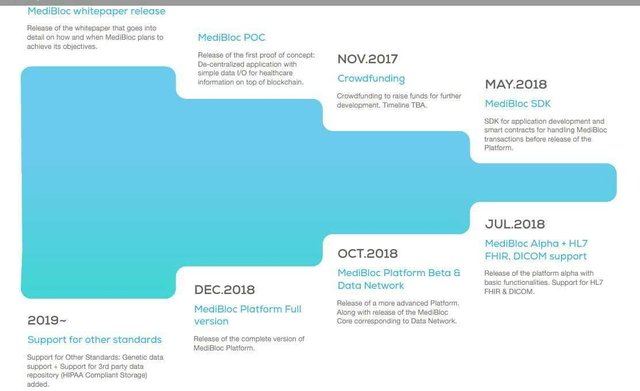
Partnership
MediBloc is already partnering with Medical institutions and companies. More partnerships are also in the pipeline. Some of the partners include:
Delloite which is a reputable accounting firm.
Hanyang University Medical Center, one of the foremost medical institution in North Korea
Kyung Hee University Dental Hospital, a reputable dental hospital in Korea. Others are Bestian Foundation, Future's Lab, Nucypher, etc. For a complete list visit MediBloc partners
See this short introductory video for a concise information on MediBloc
For more information, you can visit:
This is an entry for @originalworks' MediBloc sponsored writing contest. See the contest here
medibloc2018
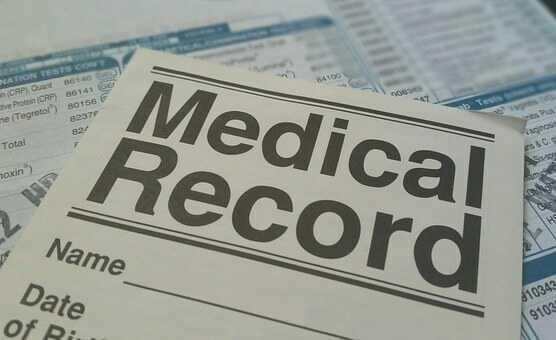

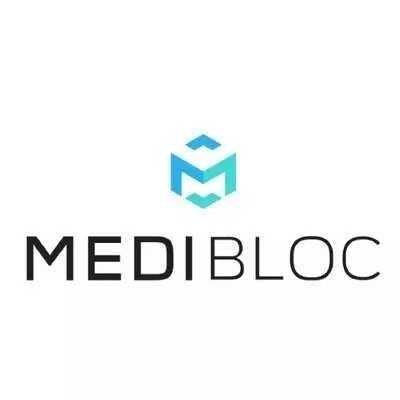
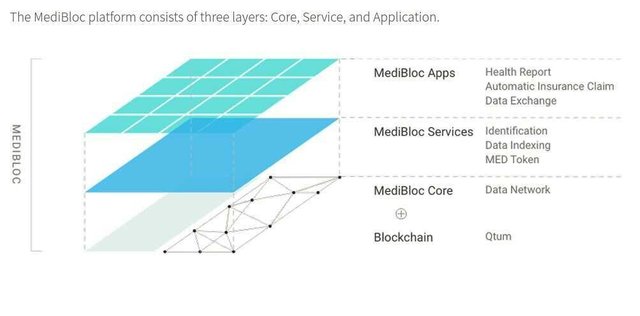
This post has been submitted for the @OriginalWorks Sponsored Writing Contest!
You can also follow @contestbot to be notified of future contests!
Hello! I find your post valuable for the wafrica community! Thanks for the great post! @wafrica is now following you! ALWAYs follow @wafrica and use the wafrica tag!